Table of contents
The whole allspice seeds ( Pimenta dioica, syn. P. officinalis) are used as a spice in many different dishes. Alternatively, allspice is also known as clove pepper, allspice or four-spice, as the taste is reminiscent of four well-known spices: cinnamon, nutmeg, cloves andpepper. The dried berries are also available in organic quality ( organic), but rarely as raw food ( raw).
Use in the kitchen:
Dried whole or ground allspice seeds can be used to flavor many dishes thanks to their spicy, hot taste. In Caribbean cuisine, the fresh leaves of the allspice tree are also used as a spice. The bark and wood of the tree are also used there to smoke vegetables, fish and meat.
What does allspice taste like? This allspice tastes like cloves, but also contains notes of cinnamon and nutmeg as well as a slight peppery spiciness.
What do you use allspice to season? Whole seeds are added to soups that tend to simmer for a long time; a combination with bay leaves and juniper gives a special, spicy taste. The ground spice is better suited for marinades, sauces, puddings and sweet pastries, as the powder has a more intense taste. The delicious spice often refines ready-made spice mixtures and dressings and is a component of curry mixtures in Indian and Arabic cuisine.
Whole allspice seeds can also be added to compote or chutney. Fruit salads, soy dishes or vegetable dishes can also be refined with allspice.
Since clove pepper is a warming spice like cinnamon and cloves, it is particularly popular during the Christmas season. The four-spice is contained in numerous, mostly ground, spice mixtures for mulled wine and gingerbread.
What can you use instead of allspice? Depending on your taste, you can use half a teaspoon of each of the following spices as a substitute for allspice: ground cloves, cinnamon powder and ground nutmeg. This mixture should be used very sparingly, however. Occasionally, you can replace allspice with nutmeg in dishes - and vice versa.
In England, allspice is used to season plum puddings and mixed pickles. Allspice is also an ingredient in herbal liqueurs such as Bénédictine and Chartreuse.
The allspice is also used in sausage production and in canned fish. In Scandinavia, pickled herring is seasoned with allspice.
Vegan recipe for pickled shallots with allspice:
Ingredients: 750 g shallots, 125 ml white wine vinegar, 2 chili peppers, 12 black peppercorns, 8 allspice grains, salt, 2 sprigs of thyme.
Preparation: Peel the shallots and put them in a large pot, add vinegar and 125 ml water. Cut the washed chili peppers into slices and add them to the shallots together with the spices, salt and the whole thyme sprigs. Bring the mixture to the boil and simmer over a low heat for about 15 minutes. Fill the onions into jars while they are still hot and seal them. To ensure that the flavor can develop properly, make sure that the spices are distributed in roughly equal proportions in the jars.
Vegan recipe for apple red cabbage with allspice seeds:
Ingredients: 700-800 g red cabbage, 2 apples, 70 g onions, 3 tbsp apple cider vinegar, salt, 25 g margarine, 3 tbsp balsamic vinegar, 200 ml red wine (can also be replaced with water or grape juice), pepper, 6 raw allspice seeds (whole or crushed in a mortar), 4 bay leaves, 5 cloves, 1 tbsp maple syrup (or honey), juice of one orange (or 100 ml orange juice), fresh parsley to garnish.
Preparation: Finely chop or slice the red cabbage, core and dice the apples, peel and dice the onions. Add apple cider vinegar and a pinch of salt to the red cabbage and knead well with your hands to give the cabbage a softer and more elastic consistency. Leave the red cabbage to steep for about 15 minutes. Meanwhile, melt the margarine in a pan and sauté the onions for 2-3 minutes until translucent, add the red cabbage and fry for 3-4 minutes, stirring constantly. Deglaze with balsamic vinegar and red wine (grape juice) and season again with salt and pepper. Also add allspice, bay leaves and cloves. Add maple syrup, orange juice and about 250 ml of water and fold in the apple pieces. Simmer the cabbage with all the ingredients with the lid closed and on a low heat for about 1 hour. After about 10 minutes of cooking, add another 150 ml of water and stir well, repeating this after another 10-15 minutes. Stirring occasionally ensures that the red cabbage does not burn and that it always contains enough liquid. After cooking, remove the cloves, bay leaves and whole allspice berries (you can leave the ground ones) and season the red cabbage with a little salt, vinegar and a little maple syrup. Once the cabbage has cooled down a little, you can serve it sprinkled with chopped parsley.
For more recipes using whole allspice seeds, see the link: " Recipes that make the most of this ingredient."
| Not only vegans or vegetarians should read this: Vegans often eat unhealthily. Avoidable nutritional errors. |
Shopping - where to buy?
Allspice is usually found as dried berries, sometimes also ground, in many grocery stores, drugstores and supermarket chains such as Coop, Migros, Denner, Volg, Spar, Aldi, Lidl, Rewe, Edeka, Hofer etc. The four-spice is also usually available in organic quality (organic) in organic stores, health food stores, organic supermarkets such as Denn's Biomarkt and Alnatura or online. Organically produced spices often come from organized small farming families or producer groups, which are then checked by national certification organizations. These guidelines correspond to the EC organic regulation.
Prefer organically grown allspice in raw food quality: gentle drying is most likely here. The raw food quality must be explicitly stated on the packaging. If this is not stated, it is quite possible that the fruit was exposed to higher temperatures during drying. Uncontrolled high temperatures can also occur when drying spices in the sun, especially if the substrate is black, for example, and/or retains heat well. In any case, there is still no official label for raw food, which is why a lot of trust is necessary.
The aroma develops best when you grind the whole allspice seeds freshly when needed; use a pepper mill or a mortar for this. To avoid clogging the coffee grinder when grinding larger quantities, you can first chop the seeds in a blender or crush them in a mortar.
Found in the wild:
The clove pepper tree grows in the Antilles. It spread naturally through southern Mexico and the Caribbean islands of Cuba, Jamaica, Haiti, Puerto Rico, the Dominican Republic and the Lesser Antilles. The predominantly calcareous or bauxite (aluminium ore) soils there have good drainage, which allows the species Pimenta dioica to thrive. 1
Storage:
What is the best way to store spices? To preserve the aroma for as long as possible, dark, airtight containers, such as screw-top jars, are recommended for storing spices. These should be placed in a dry, cool place, protected from light.
If possible, it is better to store the whole grains or seeds of spices such as allspice, pepper and nutmeg and only grind them or crush them in a mortar shortly before use. In this way, such spices can be stored for up to three years without losing much of their aroma. Fresh processing also promotes a more intense aroma. Allspice has a shelf life of around 4-6 months in powder or crushed form.
Ingredients - nutritional value - calories:
The unripe, dried fruits of the allspice contain around 3-5% essential oil - with the components eugenol (also eugenol methyl ether), caryophyllene and cineole. Resins and tannins can also be found in the fruits. The content of the essential oil eugenol can vary greatly depending on the growing area. Clove pepper from Jamaica has a content of around 60% eugenol, products from other growing areas (e.g. Mexico, Honduras) can contain only 10-15% of this essential oil. In addition to allspice, this substance also gives cloves ( Syzygium aromaticum) their spicy smell and aromatic taste. 2
The calorie content of dried allspice seeds is 263 kcal/100g, of which 26.7% are carbohydrates and 12.2% are proteins. Dietary fiber accounts for 86.4%. 3
Although allspice and cloves belong to the same plant family, cloves can have a noticeably higher manganese content (60 mg/100g): allspice has 2.9 mg/100g. In comparison, black pepper contains 13 mg/100g and cinnamon 17 mg/100g of this trace element. Manganese helps to keep the cartilage tissue in the body healthy. 3
The calcium content in clove pepper (661 mg/100g) is in a good range compared to other spices, see for example black mustard seeds (393 mg/100g) or poppy seeds (1,438 mg/100g). A sufficient calcium intake is very important for the development of the skeleton and especially during the growth phases in infancy and adolescence. 3
The high potassium content of 1,044 mg/100g is worth mentioning. Although spices are not consumed in large quantities on a daily basis, the potassium content in allspice is astonishing - compared to the amount in bananas (358 mg/100g). Potassium is an essential macronutrient that regulates the water balance in cells, among other things. 3
The iron content in clove pepper is 7.1 mg/100g, which is similar to that of chia seeds (7.7 mg/100g). Dried herbs such as thyme (124 mg/100g) or dried basil (90 mg/100g) contain a lot of iron. The daily iron requirement is 14 mg, which 100 g of cardamom would theoretically cover. Iron as a trace element is important for the transport of oxygen in the blood and for the storage of oxygen in the cells. 3
In addition, the dried allspice fruits contain a significant amount of vitamin C. 4 At 39 mg, 100 g of allspice cover almost 50% of the daily requirement. Due to the low daily consumption, a combination with other foods rich in vitamin C is particularly important. The yellow bell pepper contains a particularly high amount of vitamin C at 184 mg/100g. Other spices such as dried coriander leaves (567 mg/100g) or fenugreek leaves (220 mg/100g) also show high values. Vitamin C is well known as an important antioxidant, see our video. 3
You can find all the ingredients, the coverage of the daily requirement and comparison values with other ingredients in our nutrient tables. In the article Nutrients explained you will get a detailed insight into the topic.
Health aspects - effects:
The aromatic compounds contained in allspice, such as glycosides and polyphenols, have antibacterial, pain-relieving and blood pressure-lowering effects. 5 Allspice is said to slow blood clotting, which is why caution is advised when taking anticoagulant medication at the same time. The intake of food supplements containing allspice should be discussed with a doctor, particularly before surgery.
The antibacterial effectiveness of bark extracts from Pimenta dioica is particularly evident against drug-resistant urinary tract pathogens. This study also includes the investigation of leaf extracts from the cashew tree ( Anacardium occidentale, see Cashew nut). 6
Isolated compounds of eugenol and gallic acid have growth-inhibiting and antitumor properties on human and animal cancer cells. 5 Compounds such as ericifolin show potent activity against prostate cancer and breast cancer cells both in vitro and in vivo. 7
In addition, allspice oil has a fungicidal effect, which is particularly true for Candida fungi that attack the intestines or mucous membranes. 8 Important plant-pathogenic fungi, such as Fusarium species, Penicillium species and Aspergillus species, can also be successfully combatted with allspice oil. 9
Some dentists use eugenol to kill germs on teeth and gums or to make pain more bearable. In dentistry, clove oil and allspice leaf oil are used as prophylaxis and help treat acute pulpitis (inflammation of the dental pulp) and acute periodontitis (bacterial inflammation of the periodontal tissue). 10 Eugenol is also incorporated directly into materials (e.g. dental cement). When mixed with zinc oxide powder, the paste has an analgesic and antibacterial effect and is used as emergency dentistry. 11 However, sensitive people must be aware of the mucous membrane-irritating effect of the phenols it contains.
Dangers - Intolerances - Side effects:
Allspice oil can, if applied directly to the skin, have a skin-irritating effect due to the phenols it contains and can cause allergic skin reactions in sensitive people. Pregnant women and children under six years of age in particular should avoid using this oil in large quantities for medical purposes - however, it is safe to use as a food or spice.
In 2013, the IARC ( International Agency for Research on Cancer) classified eugenol in the form of methyl eugenol as potentially carcinogenic. Therefore, excessive use of allspice oil is not advisable. 12
Use as a medicinal plant:
When used as a spice, allspice stimulates digestion and saliva production and acts as a stomach-strengthening bitter agent when there is a loss of appetite. 2 The digestive properties of allspice can help the body lose weight. The diuretic ingredients it contains help with detoxification, allowing the body to excrete toxic substances more quickly.
Especially in the winter months, the eugenol contained in allspice is popular for colds and gastrointestinal complaints, particularly because it supports the treatment of bacterial infections.
When taken internally, allspice is said to relieve stomach pain, heavy menstrual bleeding and fever and has a positive effect on diseases such as diabetes or obesity. 13
Allspice oil is used externally for muscle tension, rheumatic complaints (bath additives) and skin problems such as acne or skin parasites. In case of skin injuries, a cloth soaked in tea can be used as a compress on the affected area, which should be changed several times a day, to prevent inflammation and infection.
Folk medicine - naturopathy:
In naturopathy, the effect of the warming spice is not only used to stimulate blood circulation, but the allspice also has a positive effect on digestion, metabolism and cell growth. In addition, allspice tea provides relief for asthmatics and respiratory diseases such as coughs.
In Jamaica, hot allspice tea is also used for colds and menstrual pain. Allspice calms and relaxes, which has a positive effect on stress and concentration.
An Aztec drink, xocólatl (xocóatl), contained allspice in addition to cocoa and many other spices. Translated from Nahuatl, "xócoc" means bitter and "atl" (or "latl") means water, i.e. "bitter water". This advanced civilization also used clove pepper as a spice and medicinal plant.
Occurrence - Origin:
Allspice originally comes from the Caribbean islands, the Greater and Lesser Antilles. Christopher Columbus brought the allspice seeds to Europe, where the English spread it around 1600. 1 Today the allspice tree grows on the Caribbean islands as well as in Mexico, Guatemala, Honduras, Brazil and the West Indies. The main growing area is still Jamaica, where you can get the best quality allspice. 2
Growing as a potted plant:
As a tropical plant, the allspice tree grows all year round at temperatures between 15 and 25 °C. It only tolerates temperatures of around 5 °C for a short time. As a potted plant, the allspice can be kept on the balcony or terrace in summer. However, it must be brought into the house or conservatory over the winter. The leaves of the evergreen allspice tree can also fall off depending on the temperature, but new leaves sprout in spring. The allspice tree does not tolerate waterlogging, but regular watering is necessary and in the summer months it is grateful for some fertilizer or compost. To prevent it from growing too tall, the shoots can be trimmed a little in spring.
Cultivation - Harvest:
The allspice tree ( Pimenta dioica L.) reaches a height of 6 to 15 m. The thin trunk has a grey-white bark that flakes off easily. 2 The evergreen tree grows in Mexico, the West Indies, Guatemala, Cuba, Brazil and Jamaica.
The plant has lanceolate-oval leaves that are bright green on the upper side and forms axillary panicles with dense inflorescences. Of the white, bisexual flowers, some are purely male and others purely female, which is something to be taken into account when cultivating allspice. For this reason, the majority of functionally female trees (clones) are grown in Jamaica and only a few male trees are planted for pollination. 1
The ripe, two-seeded, berry-like stone fruits are 5-7 mm in size and purple to dark brown. If they are picked before they are fully ripe, usually by hand, they retain their aroma longer after processing. Essential oil is extracted from these green fruits or they are dried for seven to ten days in the sun 4 - or in controlled drying facilities - for use as a spice.
An age of over 100 years is not uncommon for allspice trees in their natural environment. The trees only bear fruit from the seventh year onwards and they produce their maximum yield in around the 15th year. The maximum yield of allspice seeds per tree is around 45 kg per year. However, a regular harvest is very uncertain and is only satisfactory almost every 3 years. 1
Danger of confusion:
The dried berries of allspice (Pimenta dioica) can look similar to the seeds of pepper (Piper nigrum). However, the allspice seed is slightly larger and combines four aromatic notes (cinnamon, nutmeg, cloves, pepper).
The plant Pimenta racemosa is very closely related and is also known as the bay rum tree, bay or West Indian laurel. Bay rum is distilled from the leaves and is mainly used for medicinal purposes. 1 The fruits of P. racemosa can be confused with those of P. dioica and are sometimes used as an inferior substitute or for adulteration. 14
General information:
Allspice ( Pimenta dioica) is a plant species of the genus Pimenta and belongs to the myrtle family (Myrtaceae; not: Myrtaceae). The genus Pimenta includes 12-15 species. The botanical name Pimenta dioica also shows that it is a dioecious species. 15
Spanish explorers confused the allspice berries with those of the common pepper (Piper nigrum) because of their similarity in shape, taste and spiciness . According to Wikipedia, the fruits were incorrectly referred to as pimienta (=pepper) and were later anglicized to pimento. 15
Alternative names:
Frequently used trivial names for allspice are all-purpose spice, all-purpose spice, English spice, fashionable spice, spice grains, Jamaica pepper, new spice or spice grain. 2
In English, the term allspice is mainly used. In Spanish, piment is called pimento or pimiento and in French quatre-épices, tout-épices, piment giroflé or poivre giroflé. Piment in French and pimento in Spanish are also used for Capsicum annuum, the Spanish pepper, or for paprika. 16
Keywords for use:
A study on the effect of growth performance and disease resistance in tilapia showed that allspice has a good effect as an alternative to antibiotics in streptococcal diseases. 17
Literature - Sources:
Bibliography - 17 Sources
| 1. | Brücher H. Tropische Nutzpflanzen. Ursprung, Evolution und Domestikation. Springer: Berlin. Heidelberg, New York. 1977. |
| 2. | Pahlow M. Das grosse Buch der Heilpflanzen. Gesund durch die Heilkräfte der Natur. Nikol: Hamburg. 2013. |
| 3. | USDA United States Department of Agriculture. |
| 4. | Schneider E. Nutze die Heilkraft unserer Nahrung. Band 1. Saatkorn: Hamburg. 198. |
| 5. | Zhang L, Lokeshwar BL. Medicinal properties of the Jamaican pepper plant Pimenta dioica and allspice. Curr Drug Targets. 2012;13(14). |
| 6. | Manasa M, Yashoda K et al. Antibacterial efficacy of Pimenta dioica (Linn.) Merill and Anacardium occidentale L. against drug resistant urinary tract pathogens. Journal of Applied Pharmaceutical Science. 2013;3(12). |
| 7. | Shamaladevi N, Lyn DA et al. Ericifolin: a novel antitumor compound from allspice that silences androgen receptor in prostate cancer. Oxford Journals Carcinogenesis. 2013;34(8). |
| 8. | Kamble V. In vitro anticandidal activity of Pimenta dioica (allspice) essential oil against clinical isolates of candida albicans und non-albicans candida. International journal of life science and pharma research. 2012;2(3). |
| 9. | Zabka M, Pavela R, Slzezakova L. Antifungal effect of Pimenta dioica essential oil against dangerous pathogenic and toxinogenic fungi. Industrial Crops and Products. 2009;30(2). |
| 10. | Staudte H, Sigusch BW. The effect of plant extracts on periodontopathogenic bacteria. ZWR Das Deutsche Zahnärzteblatt. 2013;122(01/02). |
| 11. | Zahn-lexikon.de Eugenol. |
| 12. | IARC International Agency for Research on Cancer. Monograph 101 - Methyleugenol. 2013. |
| 13. | Krauss J. Utopia.de Piment: so verwendest du das Gewürz in der Küche. 2019. |
| 14. | Gernot-katzers-spice-pages.com Piment (Pimenta dioica [L.] Mer.). |
| 15. | Wikipedia Piment. |
| 16. | Rehm S. Espig G. Die Kulturpflanzen der Tropen und Subtropen. Anbau, wirtschaftliche Bedeutung, Verwertung. Eugen Ulmer: Stuttgart. 1976. |
| 17. | Yilmaz S, Ergün S. Dietary supplementation with allspice Pimenta dioica reduces the occurrance of streptococcal disease during first feeding of Mozambique Tilapia Fry. Journal of Aquatic Animal Health. 2014;26(3). |

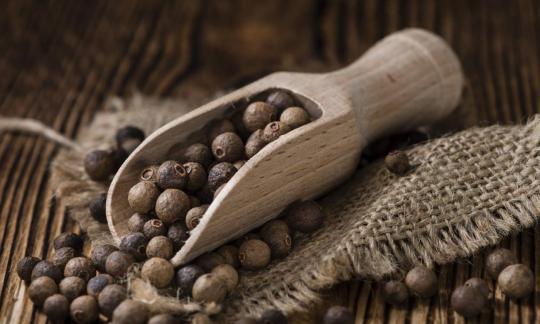

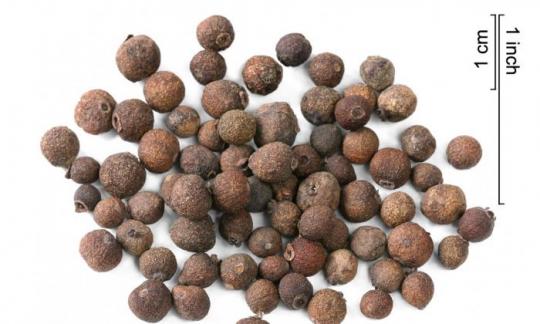

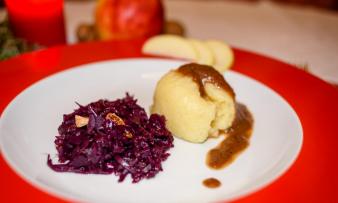
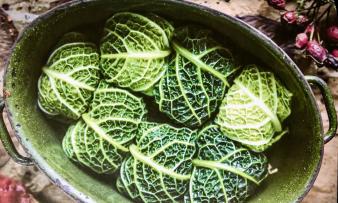
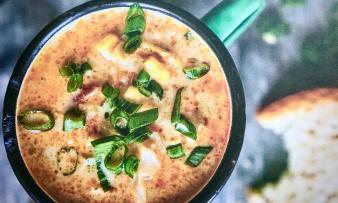





Comments